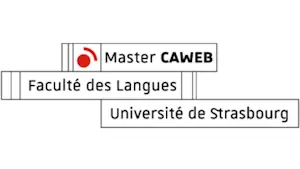How to Create a Content Strategy That Gets Results

Creating a content strategy can be overwhelming. There are many factors to consider: What type of content should you create? How often should you publish? Who is your target audience? In this blog post, we will break down the process of creating a content strategy and provide tips for getting results.
1. What is a content strategy and why do you need one
A content strategy is a plan detailing how you will create, publish, and manage your content. It helps you achieve your goals by aligning your content with your audience and overall marketing strategy. It can be challenging to produce quality content that resonates with your audience and drives results without a content strategy.
Defining a content strategy will bring you the following benefits:
– Helps you to focus your content efforts and stay on track
– Ensures that your content is aligned with your goals
– Keeps you from wasting time and resources on producing low-quality content
– Allows you to measure the performance of your content and make improvements over time
Creating a content strategy may seem daunting, but it does not have to be. By following these simple steps, you can develop a content strategy that will get results.
2. The process of creating a content strategy
There are four steps to creating a content strategy:
Set your goals
The first step in creating a content strategy is to set your goals. What do you want to achieve with your content? Do you want to drive traffic to your website? Increase brand awareness? Generate leads? Once you have identified your goals, you can create content aligned with those objectives.
Define your audience
The next stage is to describe your target audience. Whom are you trying to reach with your material? What are their requirements and interests? You can produce content that appeals to your target audience once you know who they are.
Create a content calendar
The third step is to create a content calendar. This will help you plan and publish your content on a regular basis. To create a content calendar, start by brainstorming the topics you want to write about. Then, decide how often you want to publish new content. Once you have a list of topics and a publishing schedule, you can start creating your content.
Define your metrics
The final step in creating a content strategy is to define your metrics. Do you want to track website traffic? Social media engagement? Lead generation? Or optimise your site’s conversion rate? By setting clear metrics, you can track the performance of your content and make improvements over time.
3. Tips for getting results with your content strategy
Now that you understand the process of creating a content strategy, here are some tips for getting results:
– Publish high-quality content: This may seem obvious, but it is important to publish quality content if you want to achieve results. Your audience will quickly lose interest if your content is poorly written or irrelevant to their needs.
– Be consistent: It is important to be consistent with your content strategy. If you only publish new content sporadically, you are unlikely to see results. Try to stick to a regular publishing schedule so that your audience knows when to expect new content from you.
– Promote your content: Do not forget to promote your content once it is published. Share your articles on social media, email your list, and reach out to influencers in your industry. The more people who see your content, the more likely you will achieve your goals.
For more on how to best promote your content, make sure to check out this Ultimate Guide to Promote Your Content.
By following these simple tips, you can create a content strategy that gets results.
4. How to measure the success of your content strategy
Once you have implemented your content strategy, it is important to measure the results. This can help you figure out whether your plan is working or if you should make any changes. Here are some things to monitor:
– Website traffic: How many people are visiting your website? Use Google Analytics to track page views and unique visitors.
– Social media engagement: How much engagement are you getting on social media? Track likes, comments, and shares for each piece of content you publish.
– Lead generation: Are you generating leads with your content? Use a tool like Google Analytics to track the number of leads generated from each piece of content.
By tracking these metrics, you can measure the success of your content strategy and make necessary changes.
Key Takeaways and Closing
Having a content strategy is important because it helps you achieve your marketing and communication goals. The process of creating a content strategy can seem daunting, but by following the steps we outlined in this article, you can create a plan that works for you. In addition, don’t forget to track the results of your content strategy, so you can make necessary adjustments along the way.
Follow the CAWEB Master’s social media for more tips on content strategies and creation!





